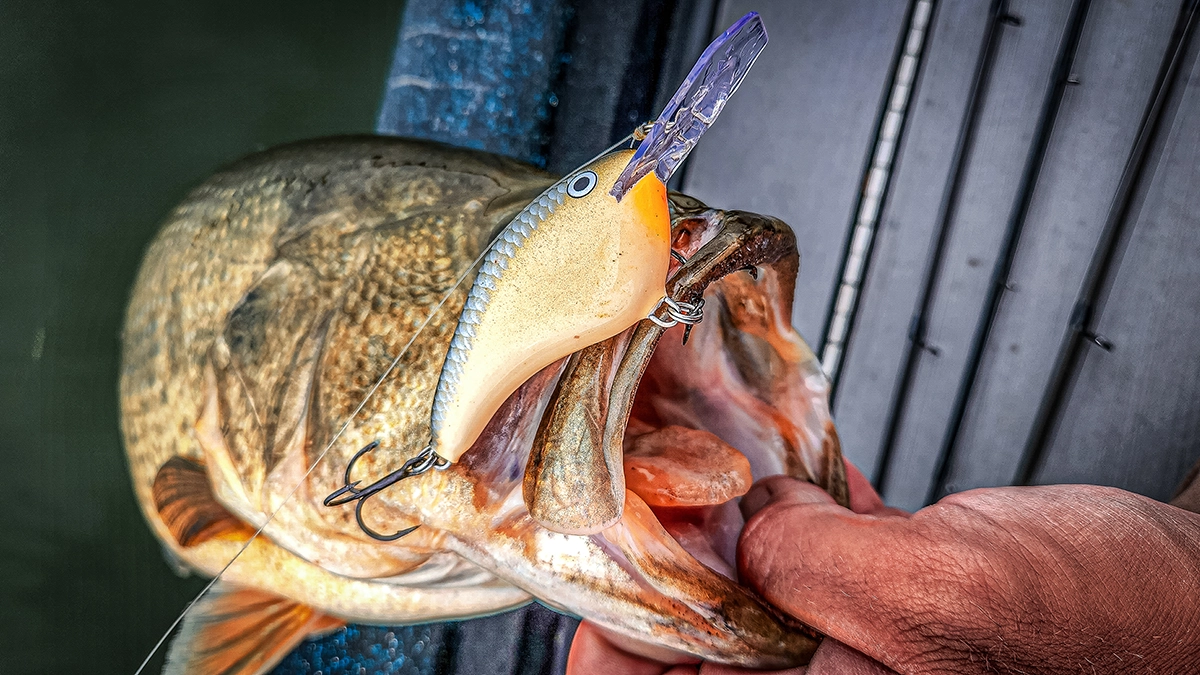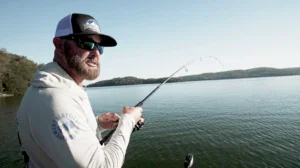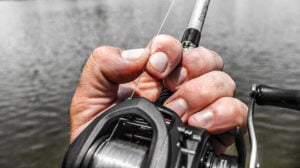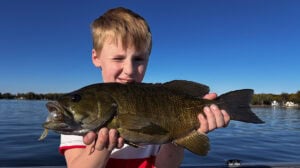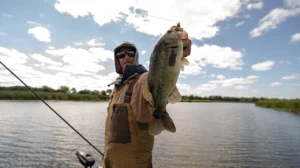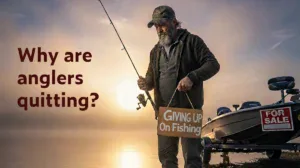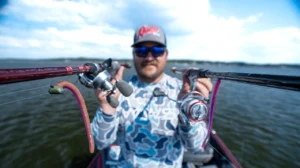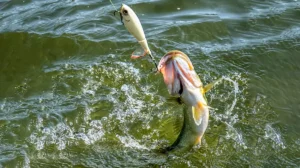Crankbaits — those year-round fish-catchers — can be classified into two major categories based on the material they are constructed from: wood or plastic. Both have their time and place, and choosing wisely can mean a few extra fish in the boat; choose poorly, and you could get skunked completely. Here’s how you crack the crankbait puzzle.
Choose Wood for Cold-Water Success
It’s no secret that a wood crankbait in the spring is one of the best lures for big largemouth, but wooden crankbaits have a distinct advantage over plastic this time of year.
Wood baits, in general, are more buoyant than plastic baits. Since most of them are made from balsa wood, they rise to the surface when paused, triggering strikes. Many wood baits also have an extremely tight wobble to them, due to their more slender body style and generally slim bill design. This allows them to excel in cold water situations, such as ice-out, ice-in, and the pre-spawn time frame.
Captain Andrew Full, owner of Full’s Fishing Guide Service out of Buffalo, New York knows a thing or two when it comes to fishing crankbaits of all varieties. When Full isn’t out guiding clients on their new personal best bass or steelhead, he hosts The Lure Lab podcast (part of the Serious Angler Podcast Network). When it comes to crankbaits, he knows his way around, or at least, has talked to someone who does.

“Balsa wood baits are perfect for anything under 40-degree water” says Full. Big largemouth that shallow up in the spring love a tight-wobbling balsa crankbait. The bill deflects off cover creating a hunting action, making it shine during the cold water months.
Bait appearance is also another key factor. While most plastic baits often have a clear and polished finish, wood baits are unable to attain that.
Generally, all wood baits have a dull finish covered with paint and a clear coat. What a wood bait can’t give in flash it gives in boldness. That’s why under cold conditions, colors like bright red and “firetiger” can be killer on both bass species.
The biggest problem with wood baits, even mass-produced ones, is consistency. Every wood bait is going to have a slightly different action, because every piece of balsa wood has its own unique density and composition, which changes their buoyancy, durability, and swimming action. In short, wood crankbaits simply aren’t as consistent as plastic.
Plastic Paints the Picture for Modern Day Cranking

Every angler has two, or seven, or 100 different plastic crankbaits in their tackle box. They are readily available, super durable, and feature a wide array of internal components that make each brand and style unique.
But how do you know when to stash the wood crankbaits and switch to plastic? Here are a few scenarios that should trigger you to make the switch.
Schooling Baitfish
Anytime bass are chasing baitfish around rocks, hard structure, or even grass edges, that’s when a plastic crankbait shines.
When baitfish move through the water, they make a clicking sound within the school, and having rattles in your crankbait can mimic this noise. And being only one singular bait, it’s going to imitate a stray that got lost from the school.
When Crayfish Are Key
If you’ve ever snorkeled in a creek in the summertime, you would have seen hundreds if not thousands of crayfish. You would have also noticed that when a crayfish scurries across the bottom, they make a clicking sound as they swim away (yes, surprisingly you can hear very well with the running water.)

Again, that clicking sound can only be emulated by a plastic crankbait with a knocking rattle in it. Baits like the SPRO RkCrawler imitate that sound perfectly. As the bait gets dragged through the rocks, the large rattles sound just like a crayfish that taunts bass with every rock it hits, triggering a strike.
Triggering a Reaction Strike
Bass will most commonly hit a crankbait on a reaction strike, and a plastic bait will cause more reaction strikes than wood baits because plastics have a much wider wobble that displaces more water. The wider wobble is caused more from the rounded out shape of the bait.
The wider the bait, the wider the action, the more water it displaces. When a crankbait like that moves by a fish at just the right time, it will trigger its lateral line senses and cause the fish to go for it.
With its intense rattles, wider wobble, and flashier appearance, a plastic bait has much more attention grabbers than a wooden bait ever will, so it should get more strikes in warmer water when fish are more active.

Our Go-To’s
There’s a plethora of crankbaits on the market, but to us only a few stand out. Not every action, appearance, finish, or design works the same, so it’s important to find certain baits that will work for your style of fishing. Here are a few of the baits of both varieties that we truly love to fish.
Wood/Balsa Baits:
- Rapala DT Series – DT6 -DT20
- Black Label Tackle line of balsa crankbaits
“I mainly crankbait fish in either the spring or the fall, that’s when it’s the best in the northeast, and nine times out of 10 I’m picking a Rapala DT series crankbait up” says Full. It’s just one of those baits that’s an absolute fish catcher.
Plastic Baits:
- Norman Lures – Deep Little N, Speed Crank, DD22
- Storm Wiggle Wart
- Spro Rock Crawler 55
If I had one crankbait to tie on in the cold weather months when bass are feeding on crayfish, it’s a wart. The crazy hunting action and loud knockers truly imitate a crayfish like no other and they’ve been catching fish for the last 30+ years. Full loves the rock crawler for this same exact reason and drives bass crazy with its unique hunting motion on the retrieve.
—
Overall, catching bass on a crankbait is an exhilarating experience when you have it dialed, and getting dialed means choosing the right bait and style for the correct situation.
When temps are cooler during the spring and fall, focus your efforts on more balsa/wood baits. They have a tighter wobble and displace less water on the retrieve making it a great crankbait to use in cold water. As the water warms, plastic crankbaits really start to shine. They have a lot more features to help bass key in on them and draw them from greater distances.
